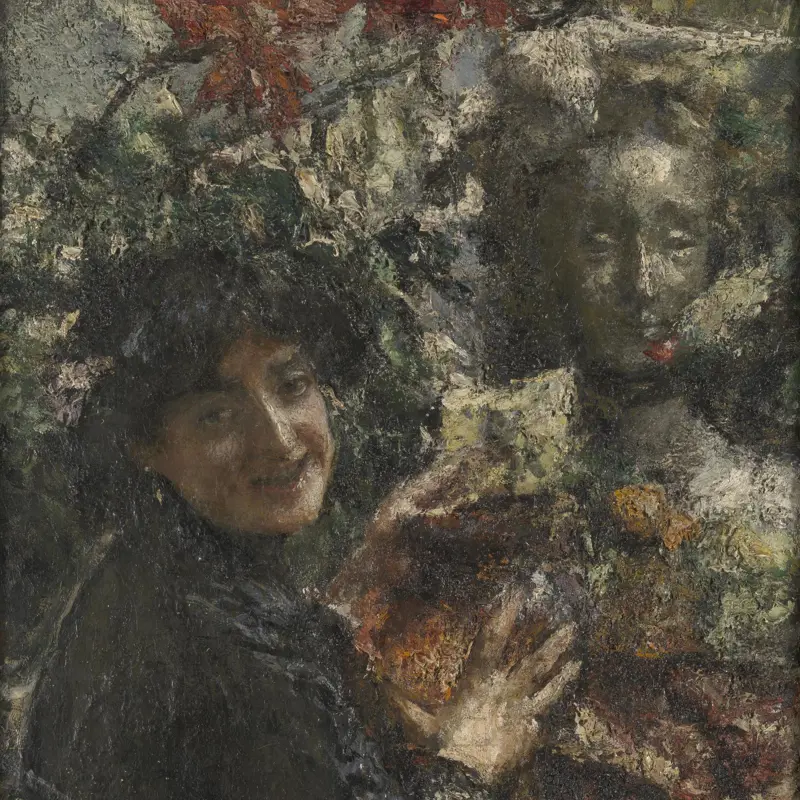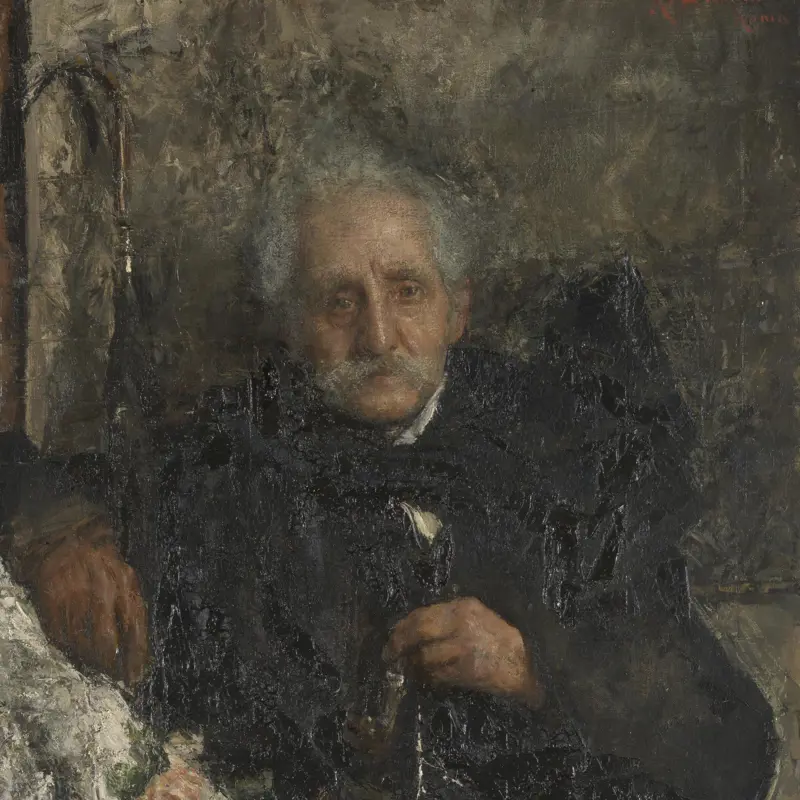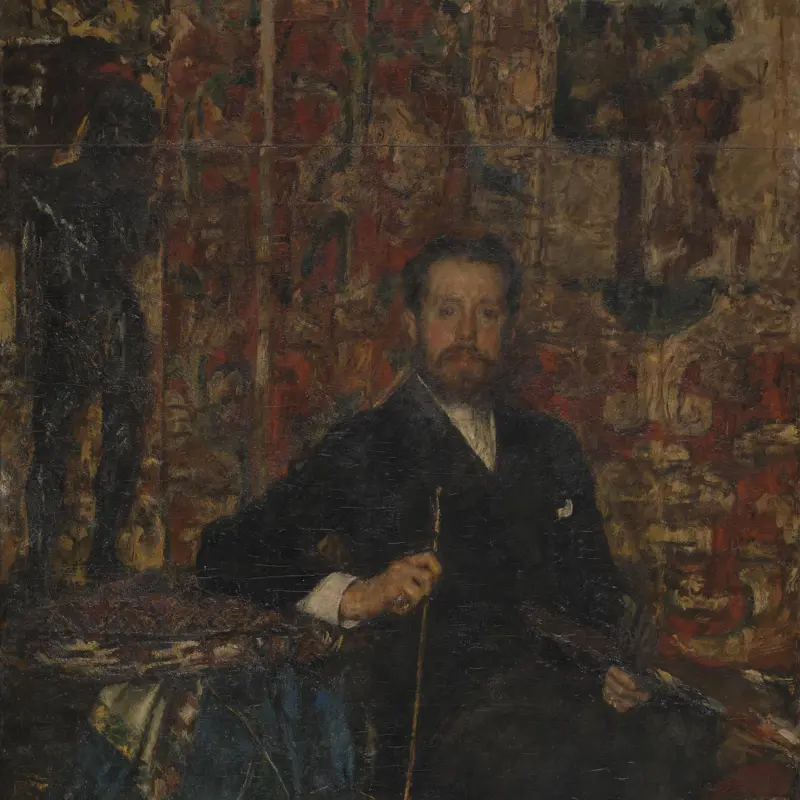Antonio Mancini, 'Adieu Paris ('The Customs')', 1877
About the work
Overview
On his first visit to Paris in 1875 Mancini signed a contract to supply pictures to a leading dealer, Goupil & Cie. On a second visit to the French capital in 1877, cut short by a mental breakdown – he never returned – Mancini delivered five paintings to Goupil, including this work. It shows an elegant if wistful young woman, surrounded by trunks and the paraphernalia of travel, who is preparing to leave Paris. Customs agents may soon arrive to inspect her belongings. It represented a change in direction for the artist, a richly detailed scene from contemporary Paris life popular with sophisticated French and foreign collectors, but unlike the more evocative depictions of Italian waifs and urchins on which Mancini was building his reputation. The Irish-born collector Hugh Lane, a Mancini enthusiast, acquired it for the Municipal Gallery of Modern Art he founded in Dublin early in the twentieth century
Key facts
Details
- Full title
- Adieu Paris ('The Customs')
- Artist
- Antonio Mancini
- Artist dates
- 1852 - 1930
- Date made
- 1877
- Medium and support
- oil on canvas
- Dimensions
- 73.7 × 59.1 cm
- Inscription summary
- Signed
- Acquisition credit
- Sir Hugh Lane Bequest, 1917, The National Gallery, London. In partnership with Hugh Lane Gallery, Dublin.
- Inventory number
- NG3255
- Location
- On loan: Long Loan to The Hugh Lane (2019 - 2031), Dublin City Gallery The Hugh Lane, Dublin, Ireland
- Collection
- Main Collection
Provenance
Additional information
Text extracted from the catalogue entry in Christopher Baker and Tom Henry, ‘The National Gallery: Complete Illustrated Catalogue’, London 2001; for further information, see the full catalogue entry.
Exhibition history
-
2006Long Loan to The Hugh Lane (2006 - 2019)Dublin City Gallery The Hugh Lane31 December 2006 - 18 April 2021
-
2013La Maison Goupil: Il successo italiano a Parigi negli anni dell'ImpressionismoPalazzo Roverella22 February 2013 - 23 June 2013
-
2021Long Loan to The Hugh Lane (2019 - 2031)Dublin City Gallery The Hugh Lane24 February 2021 - 23 February 2031
Bibliography
-
2001
C. Baker and T. Henry, The National Gallery: Complete Illustrated Catalogue, London 2001
About this record
If you know more about this work or have spotted an error, please contact us. Please note that exhibition histories are listed from 2009 onwards. Bibliographies may not be complete; more comprehensive information is available in the National Gallery Library.



